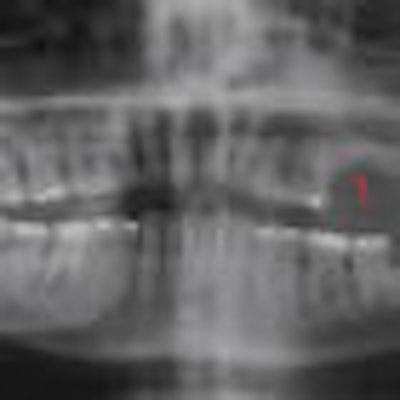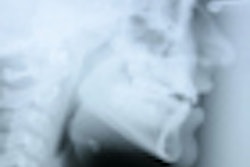
A growing body of evidence suggests that radiographs used in dental and medical practices can induce cytotoxic effects in the exposed tissue at the cellular level and damage DNA.
Now a new study in Quintessence International explores the genotoxic effects of panoramic radiographs on oral mucosa -- specifically gingival and buccal epithelial cells (September 2012, Vol. 43:8, pp. 719-725).
Researchers from the Maharishi Markandeshwar College of Dental Sciences and Research in India used a micronucleus assay test to assess chromosomal damage in the buccal mucosa and maxillary anterior gingiva,
"In the past, various biomarkers assessing metaphase chromosomal aberrations, sister chromatid exchanges, and host cell reactivation have been used to determine the effect of ionizing radiation," the study authors wrote. "However, these methods were typically laborious and time-consuming or required a high level of expertise to accurately interpret the slides."
Micronucleus assays can be used to assess chromosomal damage and are commonly examined in routine cytopathologic preparations, the researchers added. In addition, micronucleus assay tests are simple, rapid, and do not require much expertise.
Statistically significant increase
For this study, the researchers analyzed the panoramic radiographs of 80 patients in two groups: Group 1 included 20 males and 20 females, ages 15-25 years; group 2 included 20 males and 20 females, ages 40-50 years. All radiographs were taken using an Orthophos XG 5 DS Ceph (Sirona Dental Systems) with these parameters: 64 kV, 8 mA, 14.1 seconds.
The mucosal samples were taken from the buccal mucosa and gingiva using a wooden spatula immediately before radiographic exposure and 10 days after exposure. For each subject, a minimum of 500 cells each from the gingiva and buccal mucosa were studied using blind analysis, for a total of 1,000 cells for each individual, both pre- and postexposure, at 1,000x magnification.
The researchers found a statistically significant increase in the micronucleus count of the gingival epithelial cells after radiographic exposure: 1.08 before and 1.6 after (p < 0.05). They also found an increase in the postexposure micronucleus count in the buccal mucosa, although it was not statistically significant (p > 0.05). Age also appeared to be a factor, they reported, suggesting that micronucleus frequency increases with age.
"Epithelial cells are easy to obtain and appear to be target cells for this particular x-ray exposure," they wrote. "The higher micronucleus frequency in epithelial cells obtained from the gingival can be explained by the direct exposure of gingival epithelium to x-rays since the radiation from panoramic radiography is directly absorbed by gingival cells."
The researchers suggest a need for larger epidemiologic studies to precisely quantify the risk of these effects, but also caution that radiographs should be taken with adequate protection measures and only when the potential benefit outweighs the potential risk.
"Although radiation-related effects from panoramic radiography are reduced compared with full-mouth intraoral periapical radiographs or radiotherapy, the results of this study show that genotoxic effects do take place," they concluded.



















